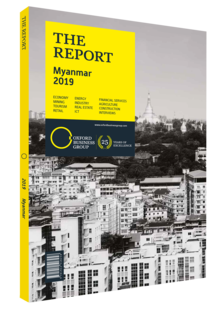Myanmar insurance market open to foreign ownership and investment
Officials have clarified the timeline for foreign insurers to enter the Myanmar market – a move that will boost competition and penetration. In August 2018 the Insurance Business Regulatory Board (IBRB) announced that overseas insurers would be allowed to formally enter the market at some point during FY 2018/19, which began October 1. “We are planning to allow foreigners to participate in the domestic insurance market,” U Zaw Naing, secretary of the IBRB, told local media. “We will hire international consultants to help us screen and review foreign insurance providers before permitting them to compete in the market,” he added.
Regulatory Support
In addition to establishing the screening and approval process, the IBRB has yet to lay out the regulatory requirements for overseas entrants, including whether they will be expected to form a working relationship with a domestic underwriter or operate as a standalone entity. However, clarification may be forthcoming. New legislation, updating the 1996 Insurance Business Law, has been drafted and submitted to the Financial Regulatory Department to review and solicit private sector commentary.
With the lowest insurance penetration in ASEAN and economic growth accelerating as a result of liberalisation in other sectors, Myanmar presents a significant growth opportunity for overseas insurers. There is also a lot of space for new players. A dozen private firms currently operate in the country, in addition to the state-owned insurer, Myanma Insurance, which accounts for approximately 45% of gross written premium.
Several international firms have already moved to establish a presence in the country. As of early 2018, 24 foreign insurers had set up representative offices: three of these – all Japanese underwriters – are allowed to sell insurance within the Thilawa Special Economic Zone.
Competitive Considerations
While the market holds undeniable potential, foreign operators will face some of the same challenges as domestic insurers. The majority of the 54m-strong population is unbanked, which hinders efforts to increase personal insurance coverage, and there is a general lack of education and awareness about the benefits of insurance.
The private sector also faces competition from state-owned providers. Private firms currently offer coverage in 13 areas, including fire, vehicle and general; whereas Myanma Insurance has 26 products, including coverage of specialised areas such as for government employees, the armed services and maritime trade.
The opening up of the sector will likely see this composition change, however, and expansion is projected in certain lines. “Of the different insurance policies available in the market, comprehensive motor insurance will be the first to experience growth in the coming years followed by property insurance,” Tatsuro Ichikawa, general manager of Japan’s Mitsui Insurance, told OBG.
Cash Crop
Agriculture is another area slated for development. Myanma Insurance announced in late August 2018 that it was working with the Ministry of Agriculture, Livestock and Irrigation, Singapore-based InfoCorp Technologies and local holding firm RGK+Z&A Group to develop a pilot livestock insurance programme by year-end. The potential market is large, with 11.5m head of livestock. Under the scheme, farmers will be able to use their electronically chipped and registered livestock as collateral when seeking finance from bodies such as the Myanma Agriculture Development Bank.
This comes on the heels of the January 2018 approval of a two-year pilot crop insurance programme by the Ministry of Planning and Finance, which covers damage to crops as a result of unfavourable weather. Although agriculture accounts for one-third of GDP and employs half the population, Myanmar has never offered this type of coverage. The project is beginning by insuring paddy in the Yangon, Ayeyarwady, Magwe and Mandalay regions, provided by Myanmar’s Global World Insurance.
Together, the schemes will grow insurance awareness among the rural population, and incentivise a new pool of clients to take out other policies in the future.
You have reached the limit of premium articles you can view for free.
Choose from the options below to purchase print or digital editions of our Reports. You can also purchase a website subscription giving you unlimited access to all of our Reports online for 12 months.
If you have already purchased this Report or have a website subscription, please login to continue.

